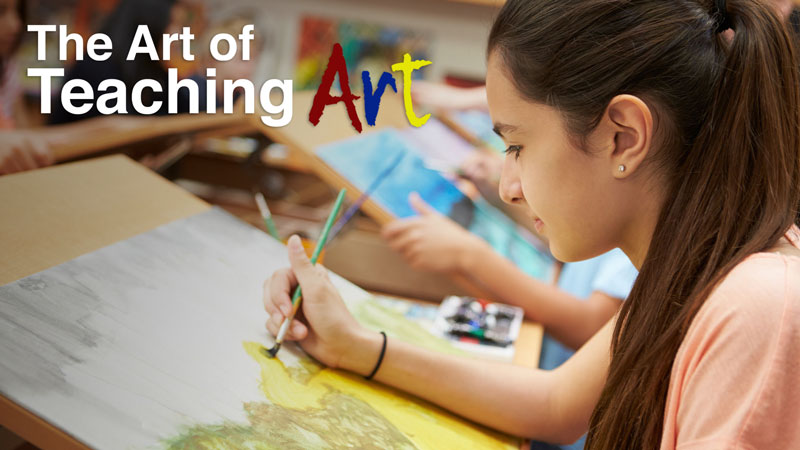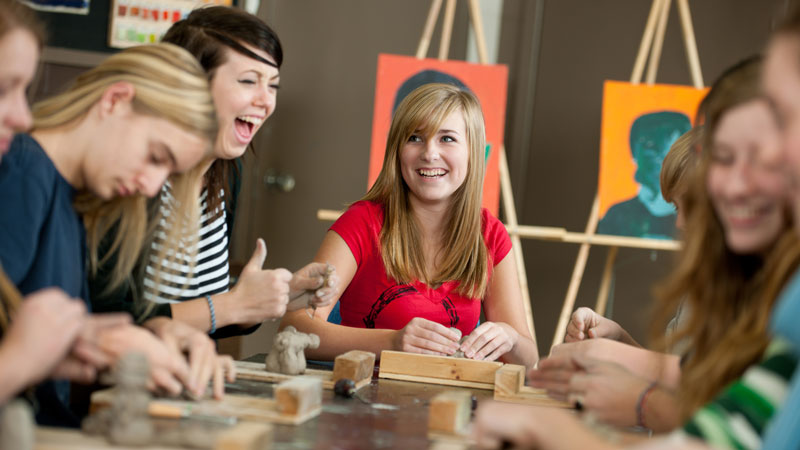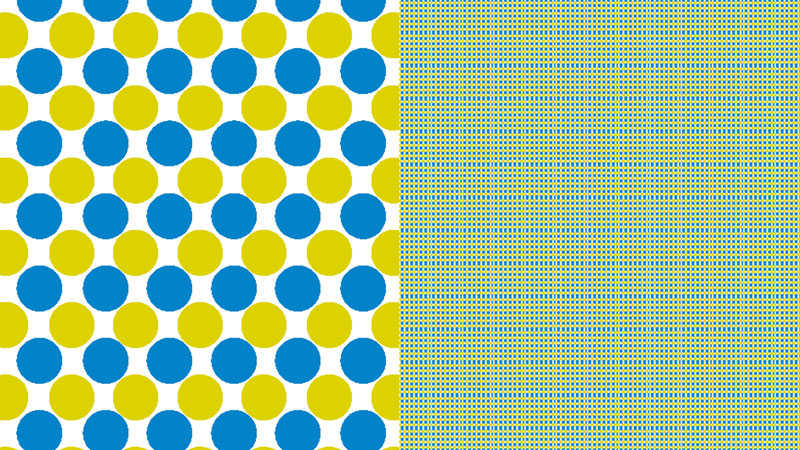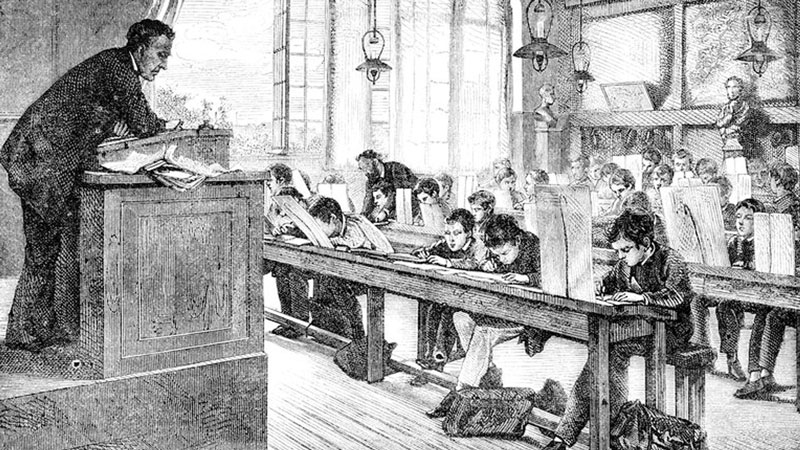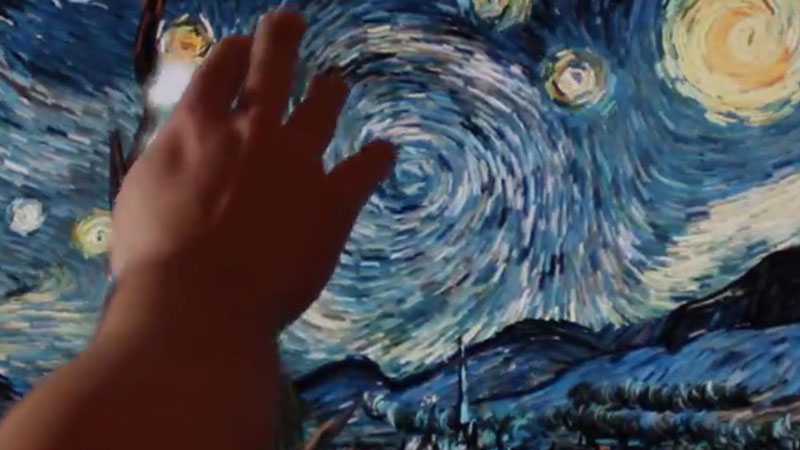
Van Gogh definitely falls into the category of an artist that used brushstrokes to convey movement in his art. The large directional brushstrokes forces your eye to follow patterns, while at the same time coveys the feeling of physical movement in the artwork.
Teaching this concept to students can, at times, be difficult. Recently, however, a Greek Digital artist, Petros Vrellis has made teaching this concept a bit easier with his interactive Starry Night.
His creation is a fully interactive digital version of Van Gogh’s famous work. When someone runs their hand or fingers over the surface, the digital interface reacts, producing a change in sounds and brushstrokes. The painting then returns to its original state, but the brushstrokes continue to swirl in the direction that were painted by Van Gogh. The painting literally moves, helping students to actually see the movement inherent in Van Gogh’s brushstrokes.
So, how does this work? Well, the short answer is probably with some complicated coding. For more information about the technical aspects involved visit creativeapplications.net
If so, join over 36,000 others that receive our newsletter with new drawing and painting lessons. Plus, check out three of our course videos and ebooks for free.

